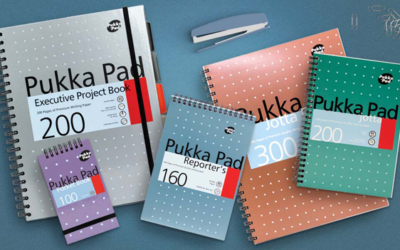“Shipping costs” might not be the first thing on your mind when you’re writing out your business plan. Although it’s not the most exciting part of starting up on your own, it’s definitely not something you should overlook.
To understand the importance of shipping costs in a business, we’ve followed the journey of “Miss Macaroon” owner Rosie Ginday. Her company has sent more than a million decadent almond-based treats across the UK and abroad, building up a client base consisting of big names like Karl Largerfield, and companies ranging from EE to Ted Baker.
To help keep your shipping cost under control, we’ve addressed some of Ms Ginday’s biggest concerns.
Why is good shipping important?
One of the key areas to consider is the safety and security of your deliveries – it’s important to be able to count on this, and to be able to receive goods and distribute products quickly. The finer details of this process will massively contribute to its success or its failure. Whether it means choosing packaging with automated bottoms, to save time on dispatch in the warehouse, or making sure your delivery partner is equipped to handle the same volumes as your factory – these are the kind of things that, if left unconsidered, can have costly consequences.
Ms Ginday says “It’s the most important thing to get right […] especially if you sell a lot of your goods online, because you don’t have any physical interaction with your customers”. She offers the following three tips on how to get your costs under control, without sacrificing quality or service.
- Figure out what your company’s shipping needs are
In Ms Ginday’s case, she knew that the Macaroons would only last seven days, therefore speed of delivery was a primary concern. “For Miss Macaroon, we need a courier that offers a next day service […] we want our customers to have the maximum amount of time to enjoy them – though they can be eaten in about 10 minutes.”
For Miss Macaroon it’s clear that fast delivery is key, however the prices for next day delivery are at a premium. So, with savings to be made if there isn’t a need for almost immediate delivery, it’s important to take the individual needs of each SME into account.
With SMEs, space can sometimes be an issue as there’s not always the capacity for storing bulk amounts of stock. Having a reliable and regular supplier means that smaller volumes can be ordered, and space isn’t taken over unnecessarily. This could, in turn, help to make a much more efficient and productive warehouse environment.
Communication is a key component to managing expectations on both sides. The shipping partner should know, clearly and in detail, the wants and needs of the SME. The discussion between both parties is an important part of the process, both for getting their expert advice and in deciding if their services are right for you.
It’s worthwhile considering if a “complete package” is the right choice for you, as it could be the more expensive option for shipping. You can save on weight and therefore costs, by choosing a protective envelope rather than an outer carton for items that aren’t as bulky or fragile. In the USA in 2015, UPS and FedEX figured out that transporting lots of small boxes, even if they were light, meant a lot of trucks were only half-full. They now look at dimensional weight, which works out costs in regards volume and weight. Clients had all the incentive they needed to start looking for cheaper, smaller and softer packaging.
- Ask your customers what they think
“It is the shipping partner who is representing your brand, so if the parcel is late or lost, or chucked over the fence, that counts against you,” explains Ms Ginday. “The service your courier provides reflects on you, so there is no point in spending a huge amount of money perfecting it and packaging it beautifully, only for it to turn up to the customer’s door muddy or smashed.
“Being mindful of what your clients are saying is absolutely crucial – take their feedback and act on it. And don’t just wait to hear their criticisms; actively ask them what they thought of the delivery service.”
Although there are plenty of reasons to look at reducing packaging sizes, you should never compromise on quality. Your items should be packed appropriately, robustly and delivered by couriers who know how best to handle them, all with tracking details available throughout. Fewer mishaps mean fewer unhappy customers, and that’s a huge win for any business.
In Ms Ginday’s experience, she says “Unhappy customers do get in touch, generally, but we really want to know what they thought of the products and how they were delivered. The communication is essential, as is resolving any issues as quickly as possible.”
- Shop around, and haggle
There’s a huge variety of courier options for businesses of all shapes and sizes, so there’s no need to be tied in to a contract. That also means that it’s up to your shipping partner to pull out all the stops to impress you and your customers.
Miss Macaroon decided to change couriers last year, Ms Ginday reveals. “We did have a good relationship with our previous partner, and they were great for a while […] but I think they have grown a lot and have not been able to recruit people that have been as committed to their service standards. That is the problem with growth, so it pays to keep monitoring the service.”
The company now uses Interlink Express, which belongs to the Dynamic Parcel Distribution network, perhaps better known as DPD. They deliver over 285 million items per year, and their rates are negotiated according to customer demand.
“It was a big leap of faith to jump from one courier to another, but it did help that we had had items delivered to us by DPD and had been really impressed. Things always turned up in one piece and when they said they would.
“Interlink offered us a two-week trial, whereby we had free delivery of parcels of a certain size. It was great to test its service, and everything has been going really well since. We are not tied to a deal, though, and it’s important to keep that flexibility.”








